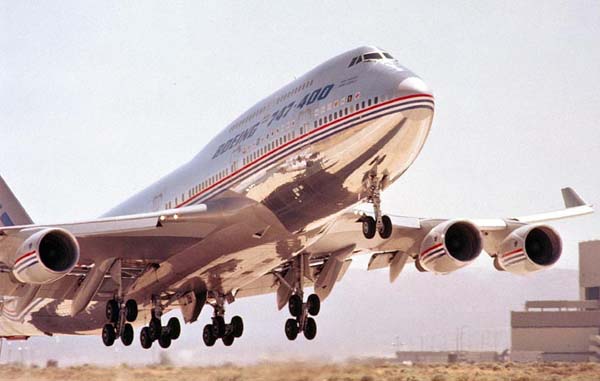
 27 June 1988: During flight testing of the first Boeing 747-400 airliner, N401PW, serial number 23719, test pilots James C. Loesch and Howard B. Greene took off from Moses Lake, Washington and climbed to an altitude of 2,000 meters (6,562 feet). The total weight of the airplane was 405,659 kilograms (894,325 pounds). This set a new Fédération Aéronautique Internationale (FAI) World Record for Greatest Mass Carried to a Height of 2,000 Meters.¹
27 June 1988: During flight testing of the first Boeing 747-400 airliner, N401PW, serial number 23719, test pilots James C. Loesch and Howard B. Greene took off from Moses Lake, Washington and climbed to an altitude of 2,000 meters (6,562 feet). The total weight of the airplane was 405,659 kilograms (894,325 pounds). This set a new Fédération Aéronautique Internationale (FAI) World Record for Greatest Mass Carried to a Height of 2,000 Meters.¹
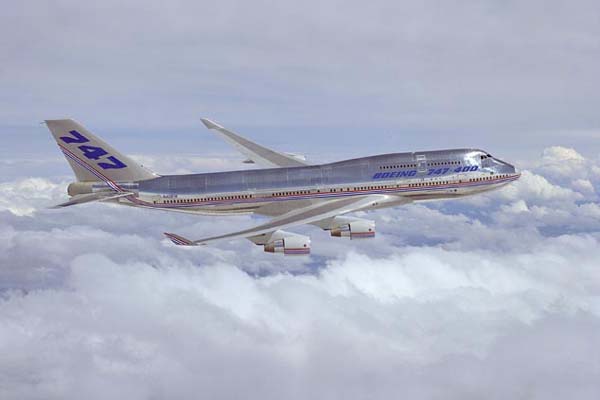
![]() The 747-400 was a major development of the 747 series. It had many structural and electronics improvements over the earlier models, which had debuted 18 years earlier. New systems, such as a “glass cockpit”, flight management computers, and new engines allowed it to be flown with a crew of just two pilots, and the position of Flight Engineer became unnecessary. The most visible features of the –400 are its longer upper deck and the six-foot tall “winglets” at the end of each wing, which improve aerodynamic efficiency be limiting the formation of wing-tip vortices. At the time of its first flight, Boeing had already received orders for 100 747-400s. It would become the most popular version, with 694 aircraft built by the time production came to an end 15 March 2007.
The 747-400 was a major development of the 747 series. It had many structural and electronics improvements over the earlier models, which had debuted 18 years earlier. New systems, such as a “glass cockpit”, flight management computers, and new engines allowed it to be flown with a crew of just two pilots, and the position of Flight Engineer became unnecessary. The most visible features of the –400 are its longer upper deck and the six-foot tall “winglets” at the end of each wing, which improve aerodynamic efficiency be limiting the formation of wing-tip vortices. At the time of its first flight, Boeing had already received orders for 100 747-400s. It would become the most popular version, with 694 aircraft built by the time production came to an end 15 March 2007.
The Boeing 747-400 airliner can carry between 416 and 524 passengers, depending on configuration. It is 231 feet, 10 inches (70.663 meters) long with a wingspan of 211 feet, 5 inches (64.440 meters) and overall height of 63 feet, 8 inches (19.406 meters). Empty weight is 394,100 pounds (178,761 kilograms). Maximum takeoff weight (MTOW) is 875,000 pounds (396,893 kilograms). While the prototype was powered by four Pratt and Whitney PW4056 turbofan engines, production airplanes could be ordered with PW4062, General Electric CF6 or Rolls-Royce RB211 engines, providing thrust ranging from 59,500 to 63,300 pounds. The –400 has a cruise speed of 0.85 Mach (567 miles per hour, 912 kilometers per hour) and maximum speed of 0.92 Mach (614 miles per hour, 988 kilometers hour). Maximum range at maximum payload weight is 8,355 miles (13,446 kilometers).
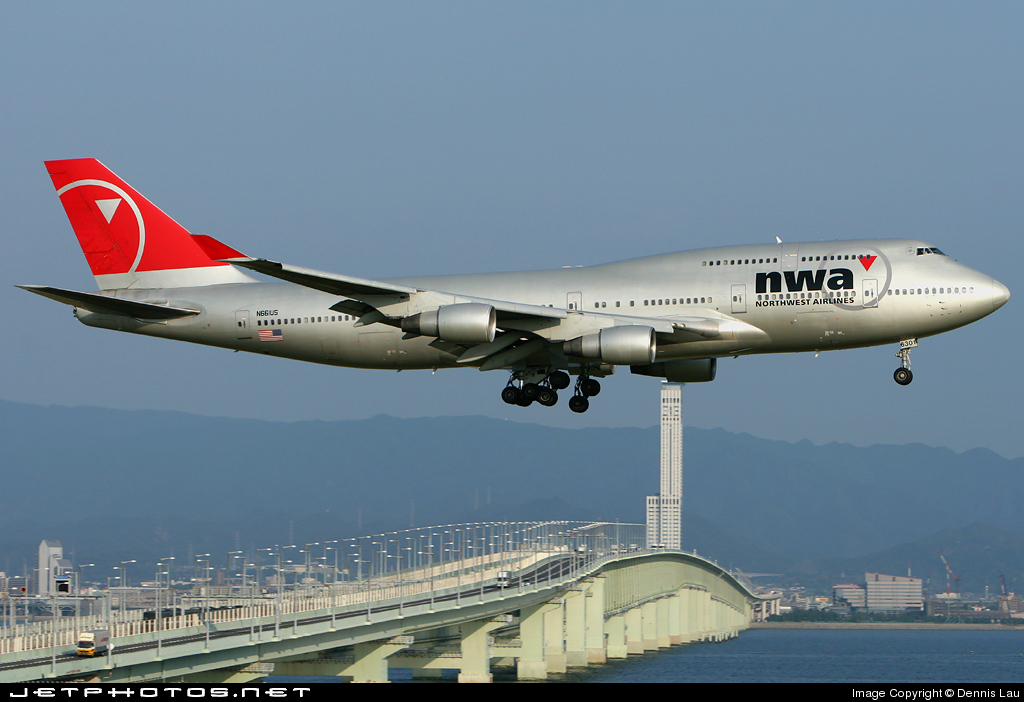
After the test program was completed, the prototype 747-400 was outfitted for airline service configured as a 747-451. It was operated by Northwest Airlines and Delta Air Lines. It was been re-registered as N661US, and carries the Delta fleet number 6301.
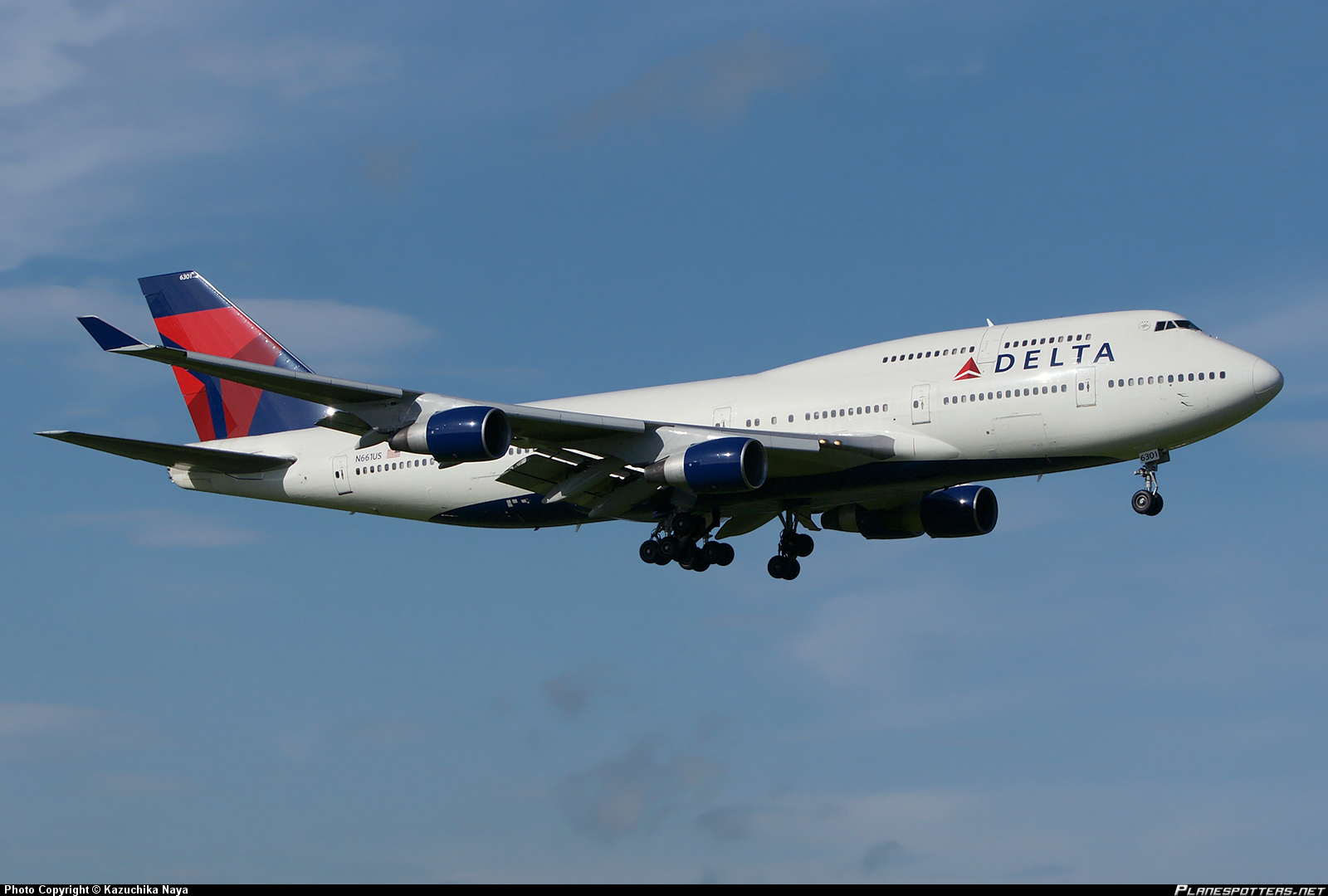
N661US flew its last revenue flight 9 September 2015, from Honolulu (HNL) to Atlanta (ATL). It was then withdrawn from service. The first 747-400 is on display at the Delta Flight Museum near Hartsfield-Jackson International Airport, Atlanta, Georgia.
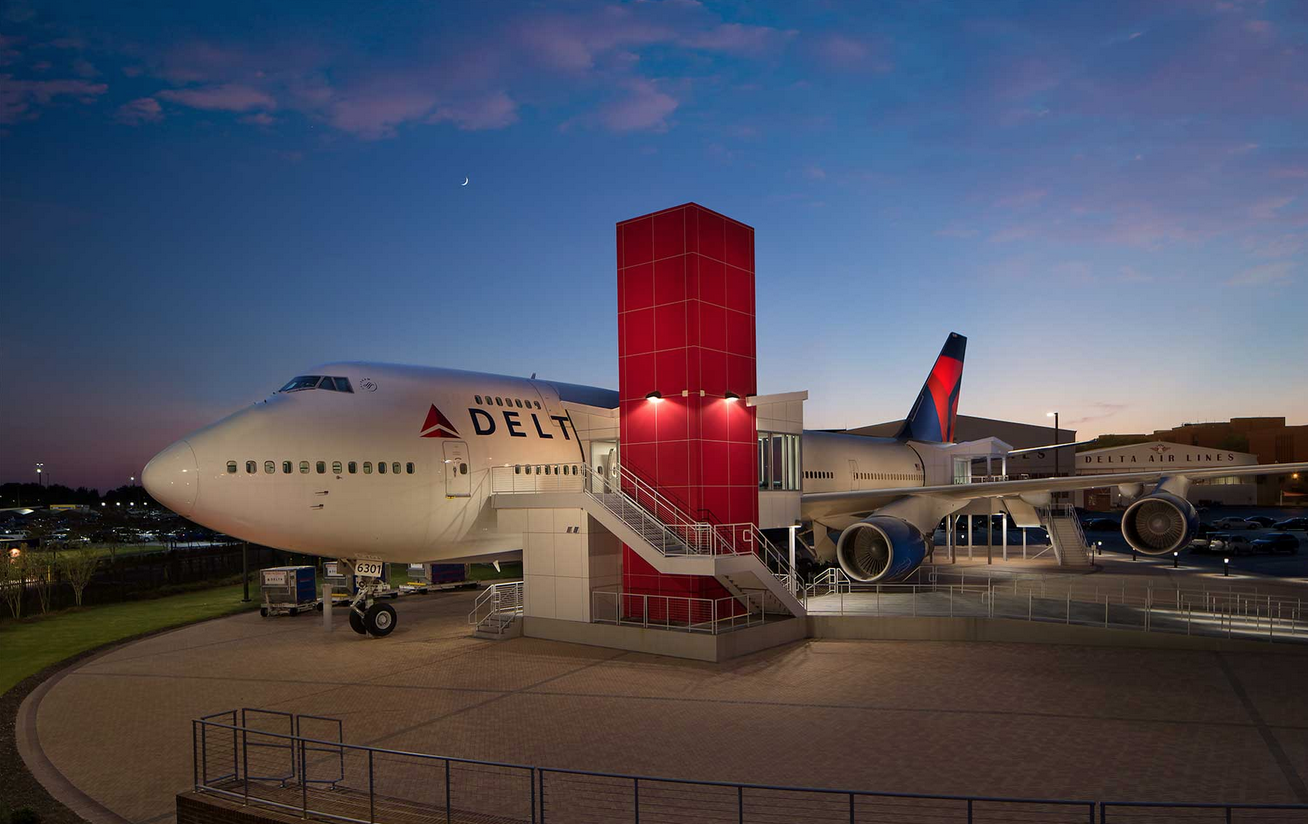
¹ FAI Record File Number 2203
© 2019, Bryan R. Swopes
Berk Greene (Howard B.) was an easy going fellow, smart, and a good “stick”. He died in 1994 just getting dressed for work.
Here is a link to his Obit.
http://community.seattletimes.nwsource.com/archive/?date=19941009&slug=1935030
Thank you for this amazing website.
Thank YOU.
Thanks for posting ! I have flown many hours in 6301 . She was a dream to fly . I was fortunate to make my last flight in 6301 just weeks before she was retired .
Thank you, Captain Mackie. I have Dennis Lau’s photograph of 6301 on my office wall.
I sure do miss going out to Post Road at MSP airport, and watching the NWA aircraft like this land and take off.